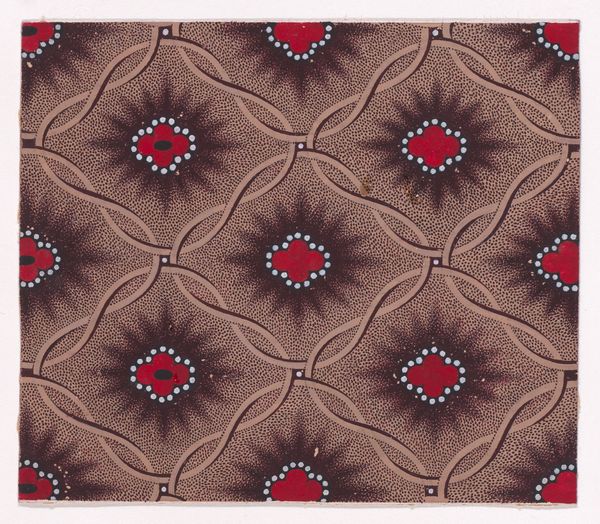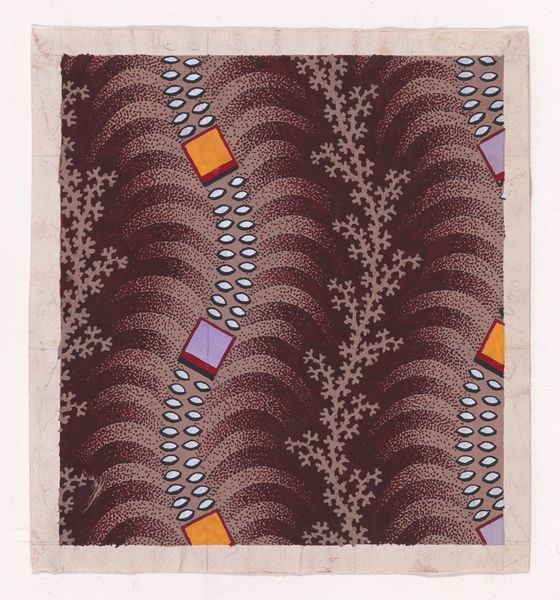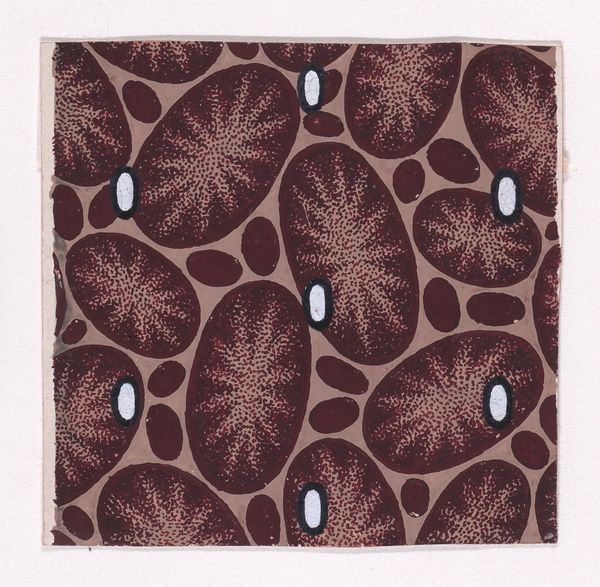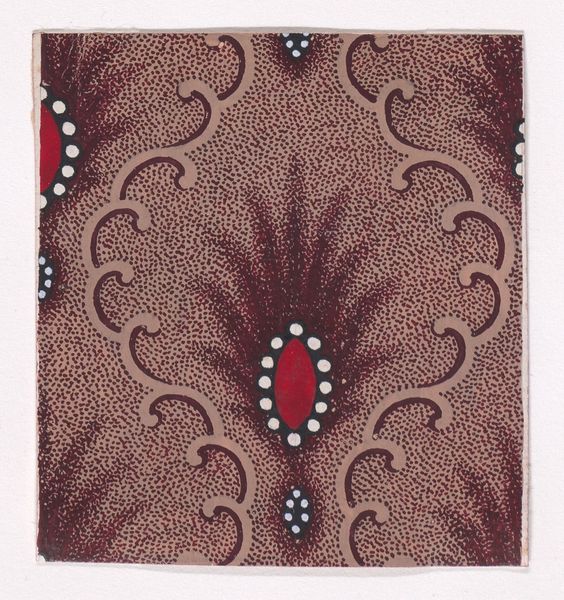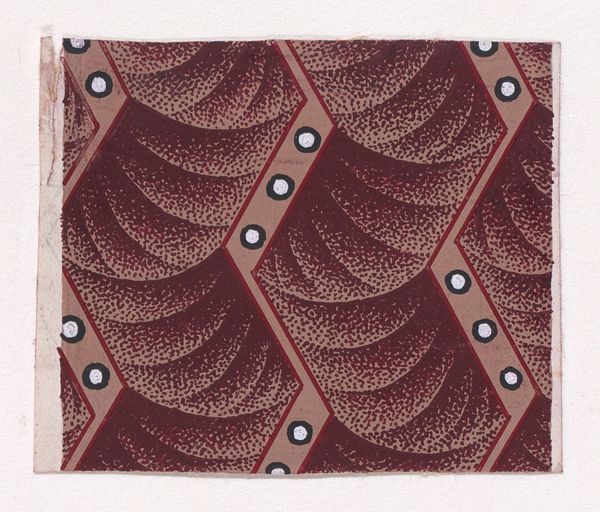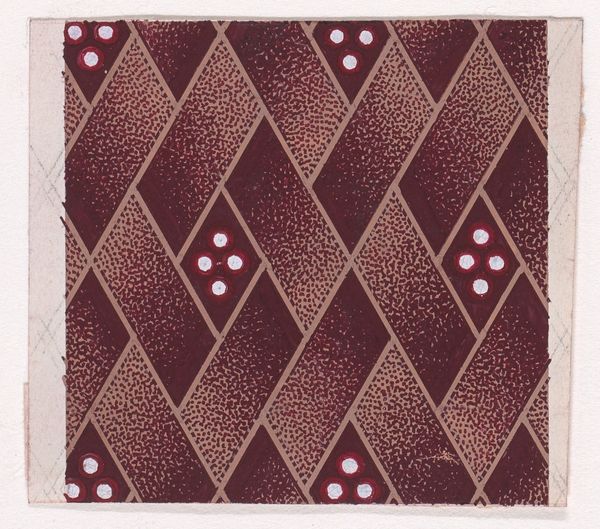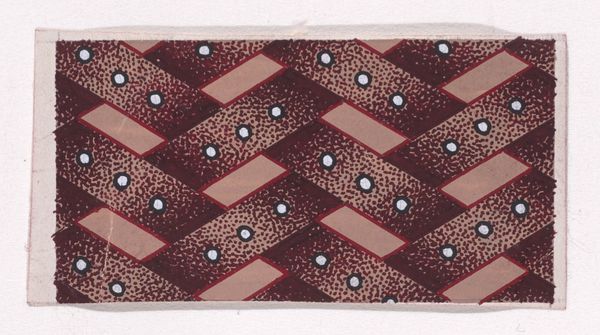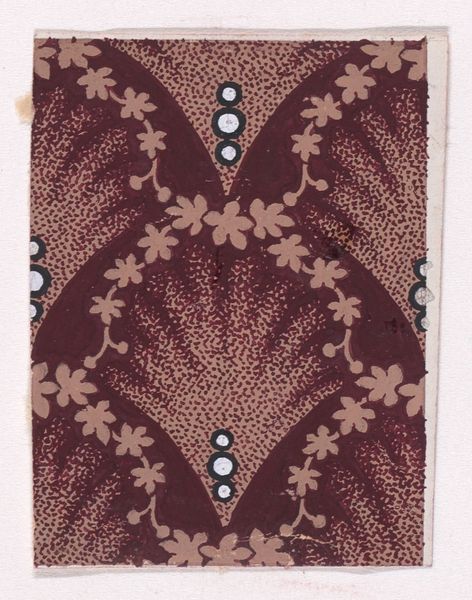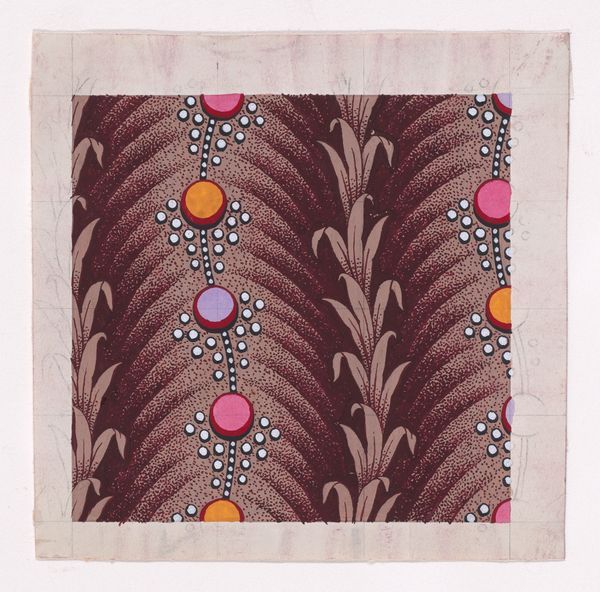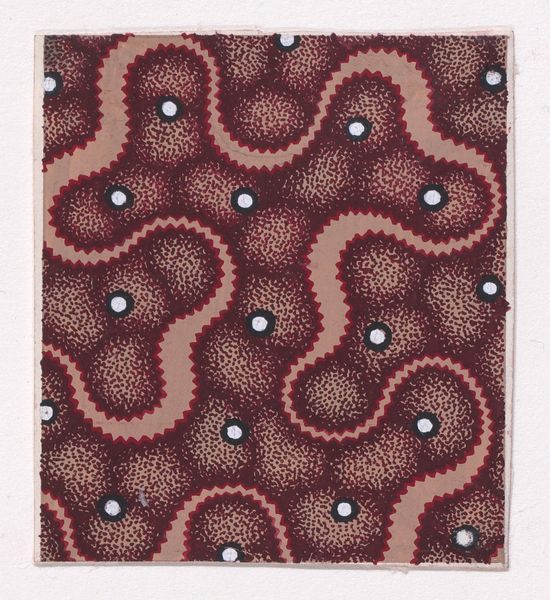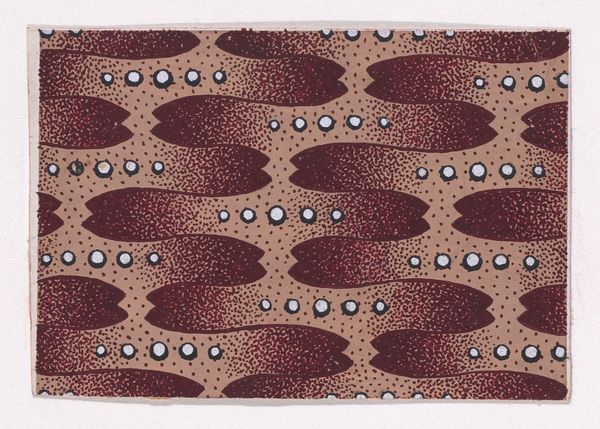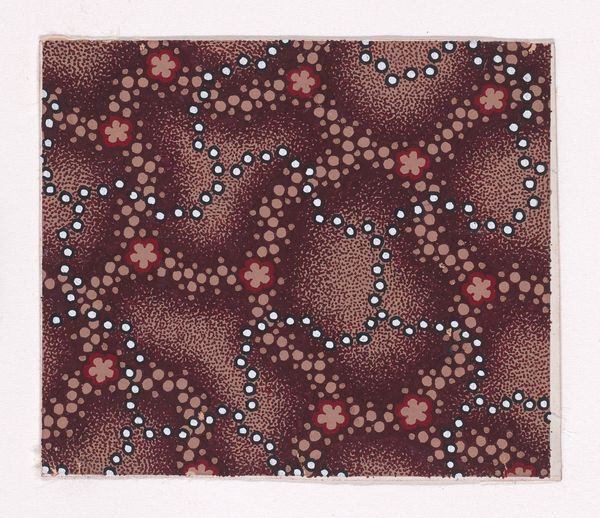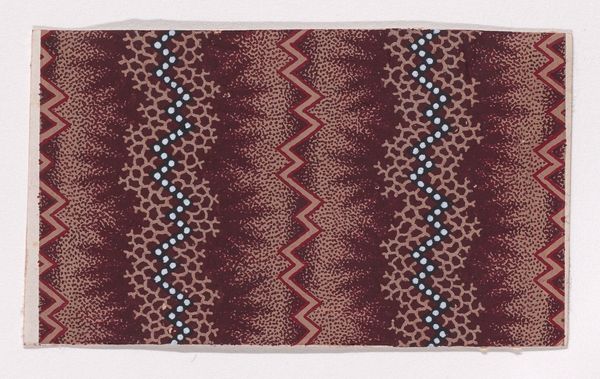
Textile Design with Alternating Rows of Bundles of Hay Decorated with Rosettes and Pearls 1840
0:00
0:00
#
decorative element
#
decorative-art
Dimensions: Sheet: 1 11/16 × 1 3/4 in. (4.3 × 4.5 cm)
Copyright: Public Domain
Editor: This is a textile design, "Textile Design with Alternating Rows of Bundles of Hay Decorated with Rosettes and Pearls", dating back to 1840. It’s an anonymous work held at the Metropolitan Museum of Art. It's a detailed pattern featuring what looks like bundles of hay, accented with little flowers and what appear to be red pearls. The design has a really grounded feel to it because of the warm browns and beige; what do you see in this piece? Curator: Well, it’s intriguing to see an anonymous textile design from the mid-19th century. It reflects the burgeoning industrial era's interest in both mass production and refined decoration. You have to consider that in 1840, the textile industry was undergoing immense change, shaping economies and societies. Notice the explicit title "Bundles of Hay". That suggests an agricultural source rendered into luxury designs, doesn't it? How do you think the use of pearls and rosettes alters the narrative of the "humble hay bundle" depicted? Editor: I guess it was meant to give it some elegance, making the fabric something fancier than a simple farm material. Were these types of designs commonly found? Curator: Absolutely. This period saw the rise of pattern books and design schools which codified artistic styles and catered to new markets. This specific textile suggests the expansion of consumer culture. Textiles had broad cultural impact. They were a form of everyday expression of wealth and status, mirroring social structures and taste. Also, in this time there was heightened awareness in consumerism because production boomed and commodities became symbols of aspiration for ordinary people. The design blends rural simplicity and high-society aesthetics; did you perceive such duality initially? Editor: I see that tension now. It makes you wonder who was actually buying and using this kind of textile. It feels less straightforward after our chat. Curator: Precisely. Historical context helps us consider beyond the pretty colors and brings new meaning to light.
Comments
No comments
Be the first to comment and join the conversation on the ultimate creative platform.
